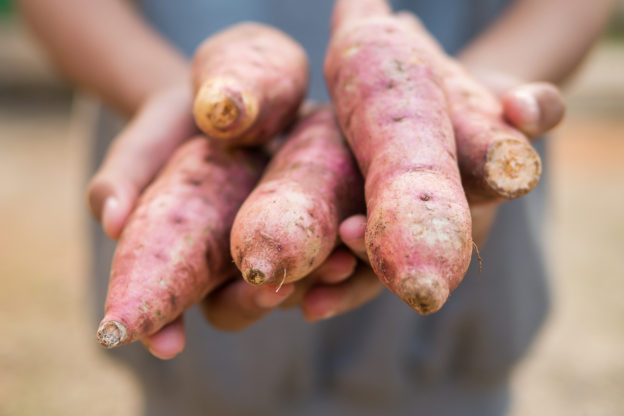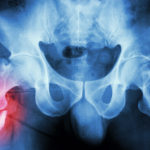By David Blyweiss, M.D., Advanced Natural Wellness
May 3, 2017
- The great potato debate: Healthy or not?
- 3 ways to cut the glycemic load of potatoes
- Tasty tips for cooking healthier spuds
Potatoes are the ultimate comfort food. Unfortunately, they’re also starchy and carry a high glycemic load. This means they can cause a rapid spike in blood sugar and insulin—which is quickly followed by a sugar crash.
What we do to our potatoes doesn’t help much either.
We smother our baked potatoes with butter, sour cream, bacon and cheese… mash them up with load of salt, butter and cream… and throw them into casserole dishes topped with mountains of cheese and bacon. And let’s not forget about French fries, those little strips of potato that are drenched in oil.
Still, potatoes are a vegetable. They’re a great source of potassium, vitamin B6 and vitamin C. They also contain phytonutrients such as carotenoids, flavonoids and caffeic acid.
So I’ll bet you’re wondering if there’s a tasty way to prepare potatoes – without all of the butter, cheese and cooking oils – that can bring out the health benefits without the sugar spikes.
MD Exposes the Hidden Danger to Your Eyes

When your eyesight starts to fail, it's a real problem. Suddenly you can't go to the grocery store... you can't get to the doctor if you have an emergency... you can't meet your friends for dinner…
Your "regular" doctor doesn't have time to keep up with the latest research. And the same goes for eye doctors. They go to school to learn how to fit you for glasses and contacts, but have no way of preventing the damage and loss of eyesight that threatens your freedom and independence.
Let me show you something that explains a LOT about how your eyes work.
In my FREE Special Report, I'll show you a HUGE, untapped resource for your eyes that safely and naturally restores clear, effortless eyesight.
Click here to get started...
3 Ways to Cut the Glycemic Load of Potatoes
A single potato carries a glycemic load that’s similar to what you’ll find in a can of Coca Cola. However, there are certain tricks you can use to cut the glycemic effect of potatoes.
Pair your potatoes with healthy fats. Eating a healthy fat with your potato delays gastric emptying, which slows down the digestive process. This, in turn, helps prevent an extreme rise in blood sugar that would otherwise occur.
For instance, when diabetics eat two tablespoons of olive oil with their potatoes, the slower rate of food travel through the stomach blunts after-meal rises in glucose and insulin.
Wild caught fish, olives, avocado and extra virgin olive oil are all great sources of healthy fats.
Add a little acidity. Adding acidity to your potatoes can also slow down sugar absorption. A perfect example of this is vinegar.
In people who are insulin resistant, two tablespoons of vinegar can improve insulin sensitivity after a high carb meal by about 34%. Additionally, it cuts after-meal blood sugar spikes by as much as two thirds.
The high acidity in lemons, limes and all types of vinegar can work to cut the negative glycemic effects of potatoes.
Let your potatoes cool. Cooking potatoes and then cooling them down for a dish like potato salad can lower the glycemic index, too. It makes the starch in the potatoes become resistant; meaning it resists digestion in the body.
Are You Suffering From...
- Love handles and a pot belly
- Romance that isn't what it used to
- Forgetfulness and inattention
- Low (or no) strength and endurance
- A sex drive that's shifted into neutral...or worse
If so...you may have Mature Male Burnout. Click here to discover more about this unique condition and what you can do about it.
Additionally, if you cool the potatoes and later reheat them (like you would do for a twice baked potato) it increases the amount of resistant starch even further.
Now that you have this information, what can you do with it?
Tasty Tips for Cooking Healthier Spuds
When you consider everything you’ve just learned, you’ll find that there are endless ways to enjoy potatoes without adding unhealthy ingredients. At the same time, you can pair them with healthful foods that reduce their glycemic load.
Here are some very simple examples of ways you can do this.
If you’re fond of baked potatoes, how about trying a twice-baked shrimp scampi potato? Cook your potatoes and let them cool. While they’re cooling, whip up a batch of shrimp scampi (shrimp cooked in olive oil, lemon juice and garlic).
Then scrape out the middles of the potatoes and combine them with the shrimp scampi. Stuff the mixture back into the potato skins and bake for about 10 minutes.
Here’s a great alternative for French fry lovers. Cut a potato into wedges. Then, toss the wedges in a bowl with a little garlic and extra virgin olive oil. Next, lay them out on a baking sheet and bake until crispy on the outside.
Once they’re cooked to perfection, serve them up with a nice, thick salsa. (Homemade salsa is acidic… typically made with lime juice, lemon juice or vinegar.)
You can make guacamole potato salad, roasted balsamic red potatoes and so much more. Experiment on your own, or check out the internet for more ideas.
Make sure to use organic potatoes whenever possible. And don’t go overboard on your potato consumption. Like all good things, moderation is key… even with these healthier versions.
SOURCES:
Brown CR. Antioxidants in potato. Am J of Potato Res. 2005 Mar;82(2):163-172.
The Glycemic Index Database. The University of Sydney. Last Updated Mar 2017.
Gentilcore D et al. Effects of fat on gastric emptying of and the glycemic, insulin, and incretin responses to a carbohydrate meal in type 2 diabetes. J Clin Endocrinol Metab. 2006 Jun;91(6):2062-7.
Johnston CS, et al. Vinegar improves insulin sensitivity to a high-carbohydrate meal in subjects with insulin resistance or type 2 diabetes. Diabetes Care. 2004 Jan;27(1):281-2.
Yadav BS, et al. Studies on effect of multiple heating/cooling cycles on the resistant starch formation in cereals, legumes and tubers. Int J Food Sci Nutr. 2009;60 Suppl 4:258-72.







